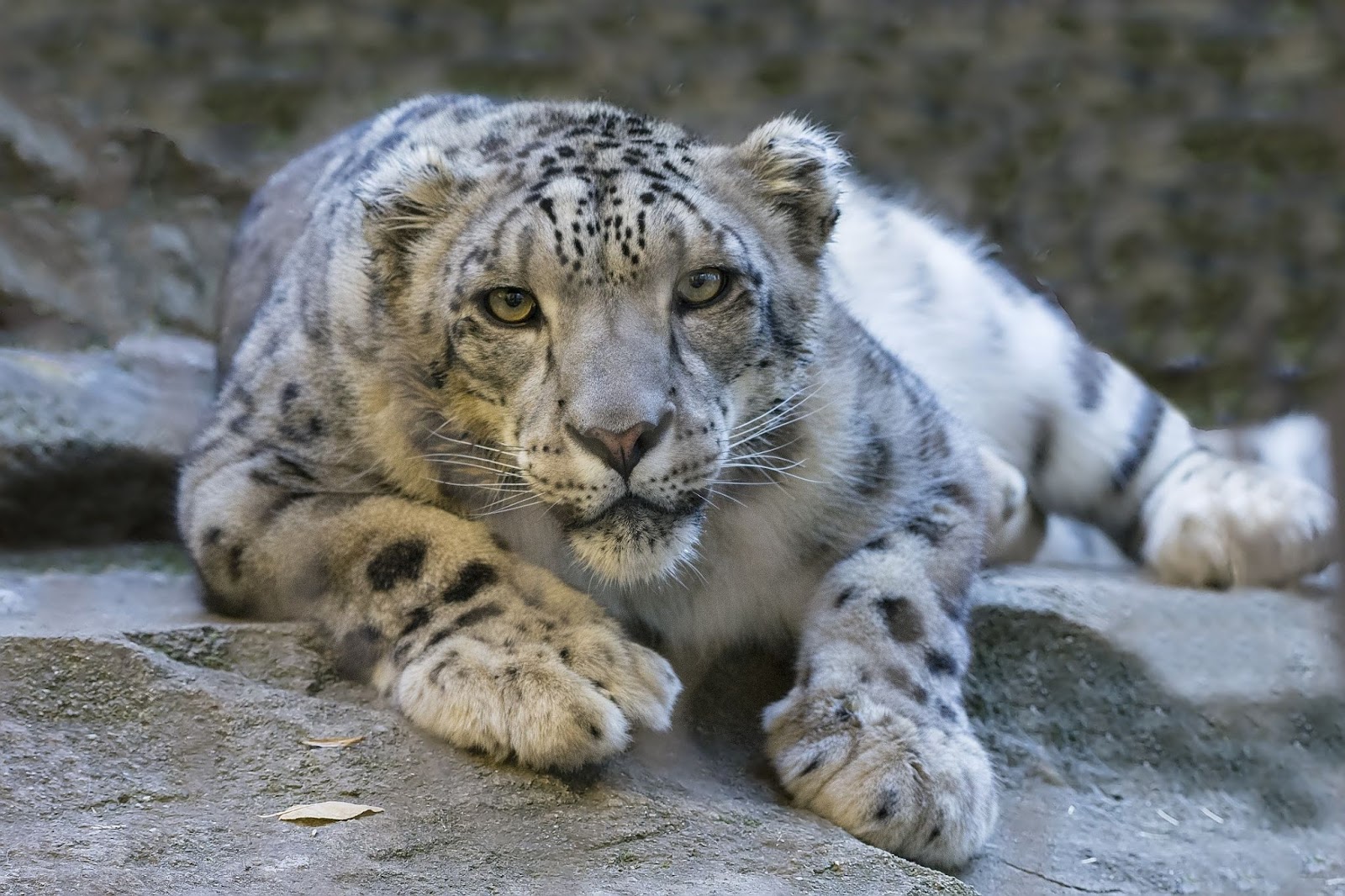Snow leopards, often referred to as the “ghosts of the mountains,” are among the world’s most elusive and captivating creatures.
These magnificent big cats inhabit some of the harshest and most remote landscapes on Earth, their stunning adaptations and enigmatic behaviors making them a subject of fascination and concern for wildlife enthusiasts and conservationists alike.
These big cats are primarily found in the mountainous regions of Central and South Asia. They call 12 countries home, including India, Nepal, Bhutan, China, Mongolia, and Russia, where they traverse the high-altitude terrain with unparalleled grace.
These elusive cats have adapted to life at altitudes ranging from 9,800 to 17,000 feet (3,000 to 5,200 meters) above sea level. One of their preferred habitats is the rugged Himalayas, where they navigate steep, rocky slopes and cliffs with astounding agility.
Snow leopards also inhabit the Pamir, Tien Shan, and Altai mountain ranges, often choosing locations with steep terrain, broken rocks, and sufficient prey availability.
Snow leopards are strikingly beautiful and boast unique physical characteristics that help them thrive in their challenging environment.
One of the most iconic features of snow leopards is their dense, smoky gray fur, adorned with irregular black rosettes and spots.
This luxurious coat not only provides camouflage but also serves as a natural insulator against the biting cold of their high-altitude homes.
They also have a long, muscular tail, which helps them maintain balance when scaling steep cliffs and jumping from rock to rock. This tail can measure up to 1 meter in length.
Additionally, these big cats have remarkably adapted to their harsh environments, equipped with large, furry paws that act as built-in snowshoes, enabling them to easily traverse deep snow.
Not only do their paws help them navigate through the snow, but the fur on the soles of their paws also minimizes heat loss and provides added traction, making them a force to be reckoned with in their snowy habitats.
But that’s not all that makes snow leopards stand out. Unlike other big cats, snow leopards have a distinctive rosy-pink nose, adding to their unique charm.
Their powerful build is also noteworthy, capable of taking down prey that’s often three times their weight.
They are opportunistic hunters, preying on a variety of animals, including blue sheep (bharal), ibex, marmots, and even smaller mammals like hares.
Population Status
The global population of snow leopards is a cause for concern. Due to their elusive nature and the remote regions they inhabit, accurate population estimates are challenging to obtain.
However, only about 4,000 to 6,500 snow leopards are believed to remain in the wild and are listed as Vulnerable by the IUCN.
Several factors threaten the survival of these magnificent cats, including habitat loss due to human activities, poaching for their fur and bones, and retaliatory killings by herders whose livestock fall victim to snow leopards.
Climate change is also affecting their habitat by altering the distribution of prey species and reducing the snow cover on which snow leopards rely for hunting.
Efforts to protect these endangered big cats include the establishment of protected areas, community-based conservation initiatives, and international cooperation to combat illegal wildlife trade.
These efforts aim to safeguard both snow leopards and the unique ecosystems they inhabit.
Conservation Efforts
The survival of snow leopards is hanging by a thread. Human activities and climate change are threatening their existence. But there’s hope on the horizon.
A growing global community of dedicated individuals, organizations, and governments is rallying together to protect these elusive cats and the fragile mountain ecosystems they call home.
One of the fundamental strategies for conserving snow leopards is the establishment of protected areas and reserves in their habitats.
These specially designated zones create safe havens where these big cats can live and hunt without the immediate threat of poaching or habitat destruction.
These areas not only help protect snow leopards but also conserve the unique ecosystems that exist in these high mountain regions.
Local communities, conservation organizations, and governments are working together to enforce stricter anti-poaching laws and develop more effective enforcement mechanisms.
In this shared mission to protect the snow leopards, we find the power of unity and determination.
These elusive “ghosts of the mountains” are more than just creatures; they represent the wild, untamed spirit of our planet’s most remote and beautiful regions.
Their conservation is a testament to our commitment to preserving the extraordinary diversity of life on Earth.
As we move forward, let us remember that our actions, whether big or small, can make a profound difference in securing the future of these majestic cats.
By protecting the snow leopards, we safeguard the very essence of our wild world, ensuring that it remains a place of wonder, mystery, and breathtaking beauty for generations to come.
Assaf Levy is the Founder & CEO of BioDB.com – a group tasked with collecting conservation data, raising awareness for biodiversity loss, and fundraising.







